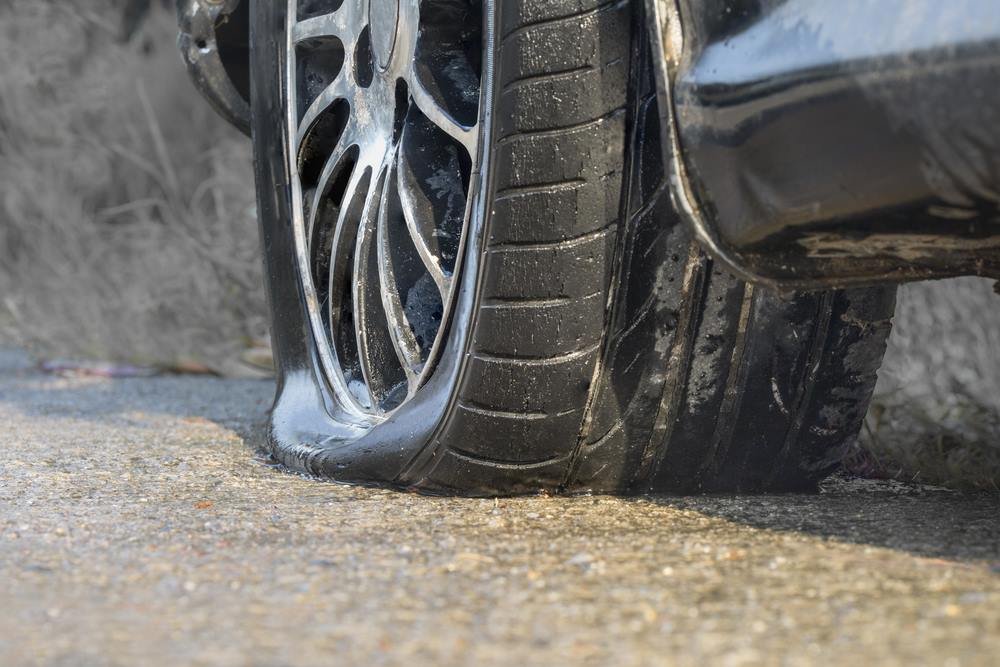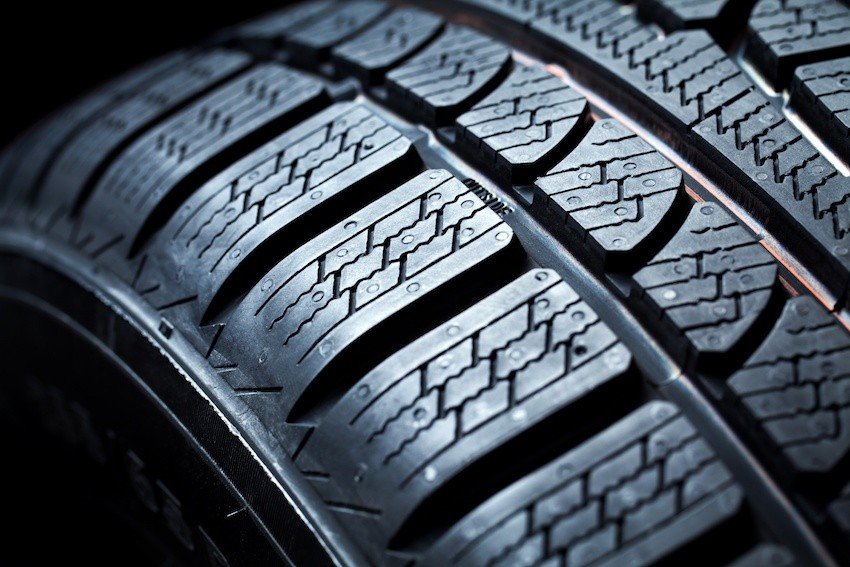Daniel Davidson, MD, MBA, DBA, PHD
Introduction:
Throughout history, there have been many unfortunate events with tire failures that have resulted in fatalities and catastrophic outcomes. Tire failure can have disastrous consequences in both aviation accidents and traffic crashes. To highlight the significance of tire safety and the impact of these situations, we will retell some of the most prominent tragic accidents that were caused by tire failures in this article.
Highway Collisions:
A considerable proportion of fatal accidents resulting from tire failures are highway collisions. Tire blowouts or tread separation cause a vehicle to lose control and cause crashes, which frequently happen suddenly. These incidents might be more severe due to factors including bad weather, excessive traffic, and high speeds. In addition to affecting the occupants of the involved vehicles, highway incidents caused by tire failures also put onlookers and other road users at danger.
- On roads, tire blowouts in particular can pose a significant risk. The car may suddenly jolt or swerve when a tire loses air pressure, which could result in the driver losing control of the vehicle. Sometimes the car will swerve into oncoming lanes or run into obstacles like guardrails, barriers, or other cars. Rollovers, collisions involving many vehicles, and severe property damage can result from the force of the impact.
- Another frequent problem that can lead to crashes on the roadway is tread separation. Particularly while traveling at high speeds, it can be dangerous for drivers when the tread breaks from the tire carcass. The car may skid or spin out of control due to a sudden loss of traction, raising the possibility of an accident. Events involving tread separation frequently result from poor maintenance, worn-out tires being used for extended periods of time, or manufacture flaws.
- Tire failures that result in highway collisions emphasize the value of proactive tire maintenance and routine inspections. When tires show indications of corrosion, wear, or incorrect inflation, drivers should inspect them frequently and replace them as necessary. In addition to reducing the chance of early tire wear and failure while driving, proper tire inflation, rotation, and alignment can help prevent these issues.
Aviation Disasters:
Significant dangers are also associated with tire failures in the aviation sector. During takeoff and landing, aircraft tires are exposed to harsh conditions, and any malfunction could have disastrous results. Tire blowouts after landing have occasionally resulted in runway excursions, fires, and even aircraft flipping. These instances demonstrate how crucial it is to have thorough tire maintenance protocols in place as well as efficient backup preparations in order to reduce the hazards connected with tire failures in aircraft.
Notable Aviation Disasters:
Air France Flight 4590 (Concorde Crash, 2000): On July 25, 2000, Air France Flight 4590, a Concorde supersonic aircraft, crashed shortly after departure from Paris Charles de Gaulle Airport, marking one of the most notorious aviation disasters brought on by tire failures. Debris on the runway punctured the aircraft’s tire, resulting in a disastrous tire blowout. Fuel leaked and caught fire after debris from the blowout struck the aircraft’s fuel tank. Along with the four people on the ground, all 109 passengers and crew members were killed when the aircraft lost control and crashed into a hotel.
Flight 191 of American Airlines (DC-10 Crash, 1979):
Shortly after takeoff from Chicago O’Hare International Airport in May 1979, a McDonnell Douglas DC-10 suffered a catastrophic engine separation. A botched repair operation that damaged the aircraft’s pylon structure was the reason behind the engine separation. The left engine separated and struck the left wing as the aircraft ascended, inflicting damage to the hydraulic systems. This was the result of the damaged pylon failing. Control was lost and a crash ensued as a result of the flight controls being inoperative due to a loss of hydraulic pressure. There were two people on the ground as well as 271 passengers and crew members who perished.
British Airways Flight 38 (Heathrow Crash Landing, 2008):
At London Heathrow Airport in January 2008, British Airways Flight 38, a Boeing 777, made an emergency landing just short of the runway. During final approach, the aircraft’s dual engines failed, causing a thrust loss. A obstruction in the fuel system brought on by ice buildup in the gasoline lines was the reason for the engine failure. The event brought attention to the possible repercussions of complicated system failures in aviation, even though the investigation could not directly link the engine failure to problems with the tires.
United Airlines Flight 232 (Sioux City Crash, 1989):
In July 1989, as the aircraft was cruising at 37,000 feet, an uncontained engine failure occurred in the tail-mounted engine of a McDonnell Douglas DC-10. The aircraft became uncontrolled due to the loss of all hydraulic flying controls caused by the malfunction. Out of the 296 passengers and crew members on board, 111 perished in the airplane crash-landing in Sioux City, Iowa, in spite of the crew’s valiant attempts to keep control via differential thrust.
China Airlines Flight 611 (2002):
All 225 passengers and crew members perished when China Airlines Flight 611, a Boeing 747-200, broke apart in midair over the Taiwan Strait in May of 2002. A fatigue crack in the aircraft’s rear fuselage was identified as the cause of the catastrophic structural breakdown that led to the disaster. Even though tire failure was not directly linked to the investigation, the incident emphasizes how crucial structural integrity and maintenance are to aviation safety.
Korean Air Flight 801 (Guam Crash, 1997):
As it approached Guam International Airport in August 1997, Korean Air Flight 801, a Boeing 747-300, crashed into Nimitz Hill. A number of issues, including crew weariness, poor crew coordination, and inadequate approach preparation, were blamed for the incident. Even though the disaster was not directly caused by tire failure, it is nevertheless important to remember the role that operational safety and human factors play in aviation.
Alaska Airlines Flight 261 (2000):
All 88 passengers and crew members were killed when Alaska Airlines Flight 261, a McDonnell Douglas MD-83, crashed into the Pacific Ocean off the coast of California in January 2000. The aircraft lost control due to a malfunction in the horizontal stabilizer trim mechanism, which ultimately resulted in the accident. Although tire failure was not a direct cause of this disaster, it does emphasize the significance of thorough maintenance and safety inspections on all aircraft systems.
Turkish Airlines Flight 981 (1974):
All 346 passengers and crew members were killed when Turkish Airlines Flight 981, a McDonnell Douglas DC-10, crashed in March 1974 close to Paris, France. The cargo door malfunctioned, causing the aircraft to rapidly deflate and lose control, ultimately leading to the accident. Although the disaster was not directly caused by tire failure, it does emphasize the significance of strict safety regulations and maintenance protocols for all facets of aircraft operation.
Public Transportation Incidents:
Tire failures have been linked to collisions involving buses and trains that are used for public transit. Buses with malfunctioning tires may lose control and roll over or collide with other cars. Similar to this, trains with defective tires may derail, injuring or killing both passengers and crew members. These incidents highlight how important tire safety regulations and upkeep procedures are to guaranteeing the dependability of public transit networks.
Accidents involving buses:
Greyhound Bus Crash (2008):
A Greyhound bus carrying passengers from Los Angeles to Sacramento collapsed on a California freeway in September 2008, leaving many people injured and several people dead. The bus driver lost control and veered off the road due to a tire rupture, which was the cause of the accident. The tragedy made clear how crucial it is for bus fleets to have their tires regularly maintained and inspected in order to save disasters like this one.
2010 Mega Bus Crash:
In August 2010, a Megabus carrying passengers from Chicago to St. Louis collapsed on Illinois’ Interstate 55, killing one person and seriously hurting numerous others. The bus veered off the highway and overturned, and investigators found that the cause of the tragedy was a tire blowout. The event made it clear that the intercity bus business needs strict safety rules and tire maintenance procedures.
Amtrak Train Derailment (2015):
Eight people died and almost 200 were injured when an Amtrak passenger train derailed in Philadelphia, Pennsylvania, in May 2015. The crash was caused by high speed on a bend, which was made worse by the train’s inability to maintain traction because of worn-out wheels and damaged rails, according to the National Transportation Safety Board’s (NTSB) investigation. The incident demonstrated the significance of routine maintenance and inspection of all important components in rail transportation, even if it had nothing to do with tire failures.
(2016) New Jersey Transit Bus Crash:
In September 2016, a New Jersey Transit bus struck a building in Newark, New Jersey, resulting in one fatality and other injuries. The bus driver lost control and collided into the building due to a tire blowout, which was the cause of the disaster. To avoid such mishaps in the future, the incident sparked calls for better tire care and inspection protocols in public transportation organizations.
London Underground Tube Derailment (2003):
A number of people were hurt when a London Underground train derailed in September 2003 between the stations of Euston and Camden Town. A malfunctioning wheelset caused the train to derail, causing the rear carriage to come off the tracks. The event demonstrated the significance of careful inspections and maintenance of all rolling stock components, including wheels and axles, even though it had nothing to do with tire failures.
2012 San Francisco Muni Bus Collision:
A biker was killed and other passengers were injured when a San Francisco Municipal Railway (Muni) bus crashed with him on Market Street. The bus’s tire rupture, which resulted in the driver losing control and slamming into the bike, was blamed for the collision. The occurrence made clear how important it is to teach bus drivers and implement better tire maintenance procedures in order to reduce accidents and safeguard vulnerable road users.
2019 Seattle Light Rail Incident:
In April 2019, a train on the Seattle light rail derailed close to the International District/Chinatown station, severely delaying and inconveniencing commuters. The train’s departure off the tracks was ascribed to a derailment caused by a wheel flange, which is a component of the wheelset, coming into contact with the rail. The event made clear how crucial it is to monitor and maintain rail infrastructure in order to guarantee passenger safety and the dependability of public transportation services, even if it had nothing to do with tire problems.
New York City Subway Train Brake Failure (2017):
In June 2017, a train traveling through a station in Harlem suffered a brake failure, which led the train to overrun the platform and strike a bumping block. Passengers suffered minor injuries as a result of the incident, which also severely disrupted operations. The occurrence highlighted the vital role that routine maintenance and inspections play in guaranteeing the safe running of subway systems and averting accidents, even if it was not brought on by tire failures.
Notable Case Studies:
The Interstate 35W Bridge Collapse:
near 2007, an undersized gusset plate design defect contributed to the collapse of the Interstate 35W bridge near Minneapolis, Minnesota. However, further examinations showed that the weight of building supplies and heavy traffic, particularly big trucks with worn-out tires, may have aggravated pre-existing fatigue cracks in the bridge’s gusset plates.
The TWA Flight 800 Explosion:
Shortly after departure from John F. Kennedy International Airport in New York City in 1996, TWA Flight 800 suffered a devastating mid-air explosion. Although the official inquiry determined that electrical arcing in the fuel tank caused the explosion, there are speculations indicating that a defective tire could have had a role in the initial ignition, which in turn caused the second explosion.
Ford Explorer/Firestone Tire Recall (2000):
This tire recall from 2000 is one of the most noteworthy case studies of tire failures. The reason for this recall was due to complaints of blowouts and tread separations on Firestone tires fitted on Ford Explorer SUVs, which resulted in accidents and fatalities. According to investigations, there was a risk of tread separation with some Firestone tires, especially the Firestone Wilderness AT, which might cause rollover accidents and loss of control. Millions of tires were involved in the recall, which sparked in-depth investigations, court cases, and changes to safety laws and tire manufacturing processes.
Continental Airlines Flight 1404 (2008):
During departure from Denver International Airport in December 2008, a Boeing 737-500 aircraft operated by Continental Airlines went off the runway, injuring multiple passengers and crew members. The aircraft skidded off the runway and caught fire as a result of a tire blowout on its right main landing gear, which was the cause of the accident. The event highlighted the possible risks of tire failures in aircraft and the significance of strict safety procedures, even though there were no fatalities.
Southwest Airlines Flight 812 (2011):
In April 2011, a rupture in the fuselage of the Boeing 737-300 aircraft caused a rapid decompression while in flight. The source of the rupture was found to be metal fatigue and corrosion surrounding a previously repaired area of the fuselage skin, according to investigations. The event demonstrated the need of rigorous maintenance and inspection protocols in locating and resolving structural problems that could jeopardize aircraft safety, even though it had nothing to do with tire failures.
United Airlines Flight 585 (1991):
All 25 passengers and crew members were killed when United Airlines Flight 585, a Boeing 737-200, crashed in March 1991 while trying to land at Colorado Springs Municipal Airport. Following an examination by the National Transportation Safety Board (NTSB), it was concluded that an uncontrollable rudder movement, likely caused by a malfunction in the aircraft’s rudder control system, was the most likely cause of the disaster. Although the tragedy was not related to tire failures, it does serve as a reminder of the intricate web of interrelated elements that can cause aviation mishaps.
Air France Flight 4590 (2000):
All 109 passengers and crew members on board as well as four people on the ground perished in the July 2000 accident of Air France Flight 4590, a Concorde supersonic aircraft, soon after takeoff from Paris Charles de Gaulle Airport. The aircraft’s left main landing gear tire failure was the cause of the crash; as a result, debris struck the fuel tank and ignited a catastrophic fire that caused the aircraft to lose control. The tragedy signaled the end of Concorde commercial flights and highlighted the significance of aviation tire safety.
Conclusion:
Tire failures that result in fatal accidents serve as stark reminders of how crucial tire safety is for a variety of transportation types. Tire dependability is critical to guaranteeing passenger and worker safety on roadways, in the air, and on public transit systems. We may try to stop future tragedies brought on by tire failures by applying strong maintenance procedures, safety regulations, and lessons learned from previous accidents.







